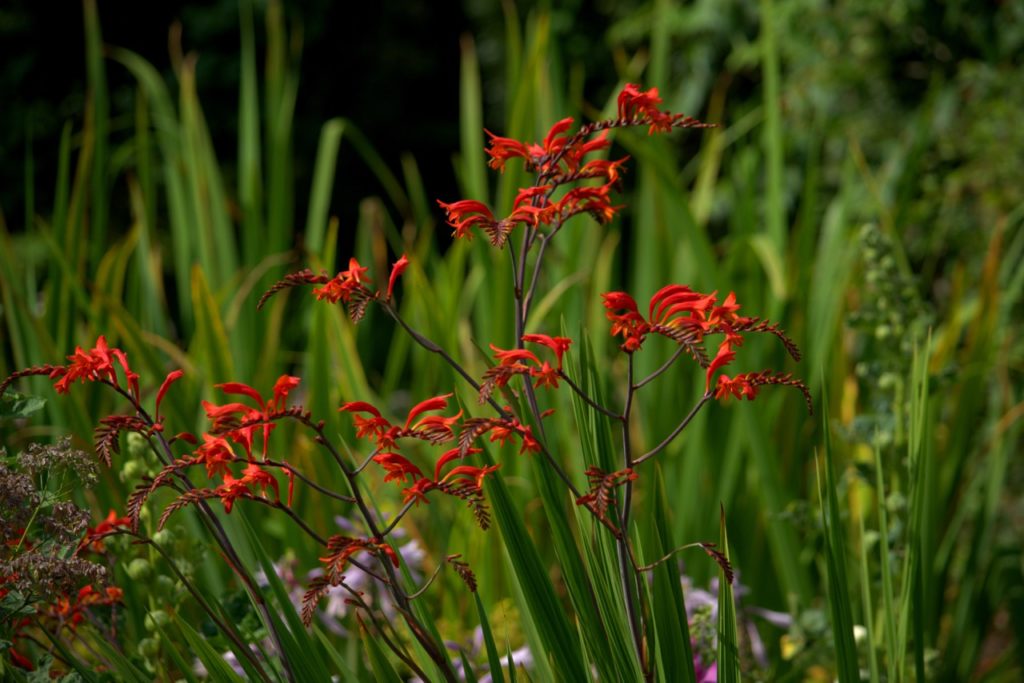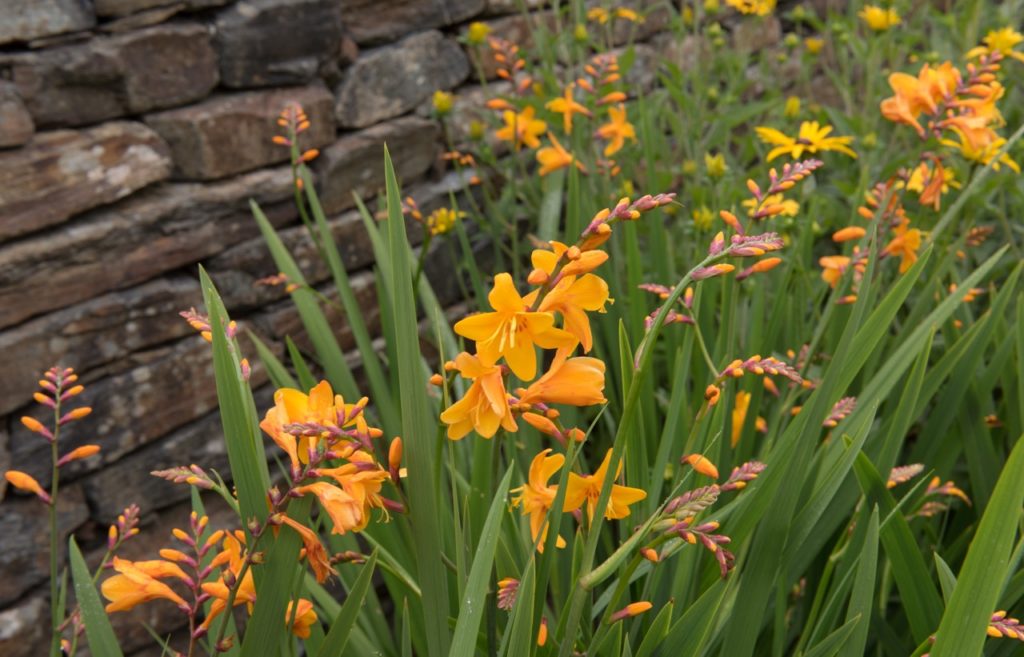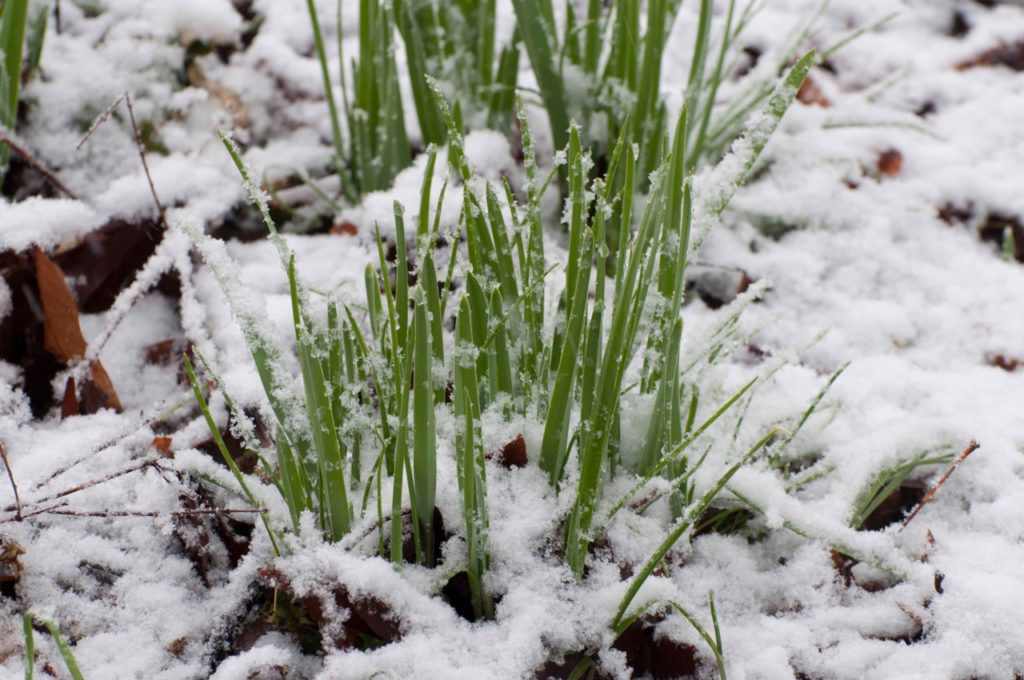PERENNIALS > CROCOSMIA > NOT-FLOWERING

Elizabeth is a Permaculture Garden Designer, Sustainability Consultant and Professional Writer, working as an advocate for positive change. She graduated from the University of St. Andrews with an MA in English and Philosophy and obtained a Diploma in Applied Permaculture Design from the Permaculture Association.
Reviewed By COLIN SKELLY

Colin is a Horticulturist and Horticultural Consultant with experience in a range of practical and managerial roles across heritage, commercial and public horticulture. He holds the Royal Horticultural Society’s Master of Horticulture award and has a particular interest in horticultural ecology and naturalistic planting for habitat and climate resilience.
IN THIS GUIDE
CROCOSMIA GUIDES
Container Growing
Not Flowering
Overwintering
Pruning
Varieties
Crocosmias can be reliable plants, which bloom well year after year in the right setting, but it is not all that uncommon to have a crocosmia which fails to flower.
If you have a new crocosmia which has not flowered, this can have a number of reasons:
- It might need more time to mature.
- It may bloom a little later where you live.
- The location may be too shaded.
- The soil may not be sufficiently moist.
If you have a crocosmia which has failed to flower after having flowered well before, this may also be due to under-watering or a particularly dry summer.
It may also be because:
- Your plant is congested, and needs to be divided.
- You may have pruned your crocosmia too soon after flowering, so corms could not develop as they should.
- Corms were damaged in particularly cold winter conditions.
- The plants were provided with excessive nitrogen fertiliser.
- Plants were not provided with sufficient potassium for flowering.
New Plant Not Flowering
If a new crocosmia fails to flower, first of all, check that you should expect flowers now.
You may simply have to wait for corms to mature further or for the flowering period where you live.
If flowers do not appear when they should on a new crocosmia, usually this is down to a problem with where you have placed your crocosmia.
These plants can cope with some partial shade but could benefit from being transplanted to a sunnier position if they fail to flower.

“Shade is the problem I have most often encountered with loss of flower with Crocosmia,” says Horticultural Consultant Colin Skelly.
“This may happen because it is planted in the wrong place to start with it but also because conditions change because of plants growing up around it.
“Once exposed to full sun again, Crocosmia should return to flower.”
You may also have chosen a spot which does not provide the moist but free-draining, fertile soil conditions that these plants require.
Transplanting to a more suitable spot, or amending the soil with plenty of organic matter, could solve this problem.
Older Plant Not Flowering
If you have a crocosmia in your garden which has flowered well in previous years and is obviously in a suitable spot, another issue is to blame.
One of the most common reasons why crocosmia fails to flower after having done so well in previous years is congestion.
Mature clumps of these plants should usually be lifted and divided every 2-3 years.

Crocosmia may also fail to flower or have a poor flowering year because corms did not develop as they should over the winter months.
You may have cut back the crocosmia too soon after flowering and not given them the chance to photosynthesise and gather energy for the next year in their corms.
The corms may also have been damaged by cold in the winter.
In northern areas, it can be a good idea to lay a thick mulch over the corms to keep them safe over the coldest months.

Failure to flower, in new plants but especially in more mature ones, may also be down to a problem with fertility.
If you have fed crocosmia with a strong nitrogen fertiliser, this may encourage foliage growth at the expense of flowers.
Your plants may also be suffering due to the depletion of potassium in the growing area, so feeding with a potassium-rich organic plant feed could help them flower next year.

